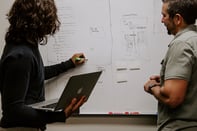Published on
Five Ways edX is Changing Education
The first change he notes is the possibility to engage alumni in new ways. Parry points out that edX courses are reaching out to university alumni to help grade courses, which is essential to being able to conduct a human review of the coursework. Robert Miller, an MIT professor who teaches a software engineering MOOC, pointed out that this allows alumni who own businesses to get a first-hand look at the students their alma mater is working with and potentially find some future employees in the process.
The second change is that this approach reinvents hybrid teaching. After a highly successful experiment where an MIT professor taught a group of high school students in a “flipped classroom”, the university is taking the experiment to a community college where they will combine MOOC content with campus instruction. This could be the first step toward MOOCs providing some value for introductory- and remedial-level programming.
The third change is that it gamifies labs; where video games become a more integral part to the learning process.
“You see a lot of immersive experiences in the online gaming world, where people really get caught up in the mission,” Christopher J. Terman, a senior lecturer who helped build edX’s lab, told Parry. “When you think about what an immersive engineering experience is, we’ve really just scratched that surface.”
The fourth change is that it allows a deeper study of the human mind. Enrollment is expected to eventually grow into the millions for edX, and as such all the activity of all those students will be tracked, logged and available for the analysis of researchers. This could provide, for example, anthropoligists studying online social interactions an in-depth and all-encompassing look at how a massive online society functions.
It will also give researchers the opportunity to track what students learn and recall, the results of which could significantly change approaches to teaching and learning.
Finally, edX is changing the way education is delivered at MIT itself as increasing number of students become taken by the opportunities of online learning and enroll. Ultimately, the prediction of Anant Agarwal, the president of edX, is simple.
“Ten years from now most of our classes will be using blended learning.”



